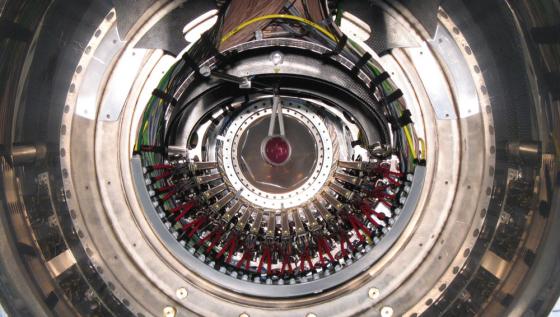The MEG experiment is searching for the Lepton Flavour Violating (LFV) decay of the muon: μ → eγ. With the established fact of neutrino flavour mixing and its finite mass, the Standard Model is now believed to be an effective theory and a low-energy manifestation of a more fundamental theory at higher energies could be observed. Several classes of models beyond the SM, such as supersymmetry, grand-unification, extra-dimensions or models with heavy right-handed neutrinos, for the branching ratio of LFV decays such as μ → eγ in the range of 10-11 to 10-15, thus validating that MEG search is complementary to that of high-energy TeV-scale accelerator searches for “New Physics”.
The quest for μ → eγ dates back more than sixty years to the pioneering efforts of Hinks & Pontecorvo in 1948, who first searched for a signal in cosmic-ray decays. MEG is searching now this decay at the most intense muon source in the world at PSI (CH), looking at the muon decay products at a rate of 3x107 per second. The electron energy and decay time is detected within a magnetic spectrometer in which are mountes Drift Chambers and 60 ps resolution Timer Counters (Responsability of Genoa Group). The gamma is is detected by about 3 tons liquid Xe detector. All the 2000 readout channels from the detectors are fully digitised at about 2 GB/s. The experiment has completed in 2013 the first phase and the most updated upper limit on μ → eγ is 5.7x10-13 respect to the muon normal, 20 times lower than the previous limit.
The MEG experiment is co-financed in Italy by the National Institute of Nuclear Physics (INFN).



